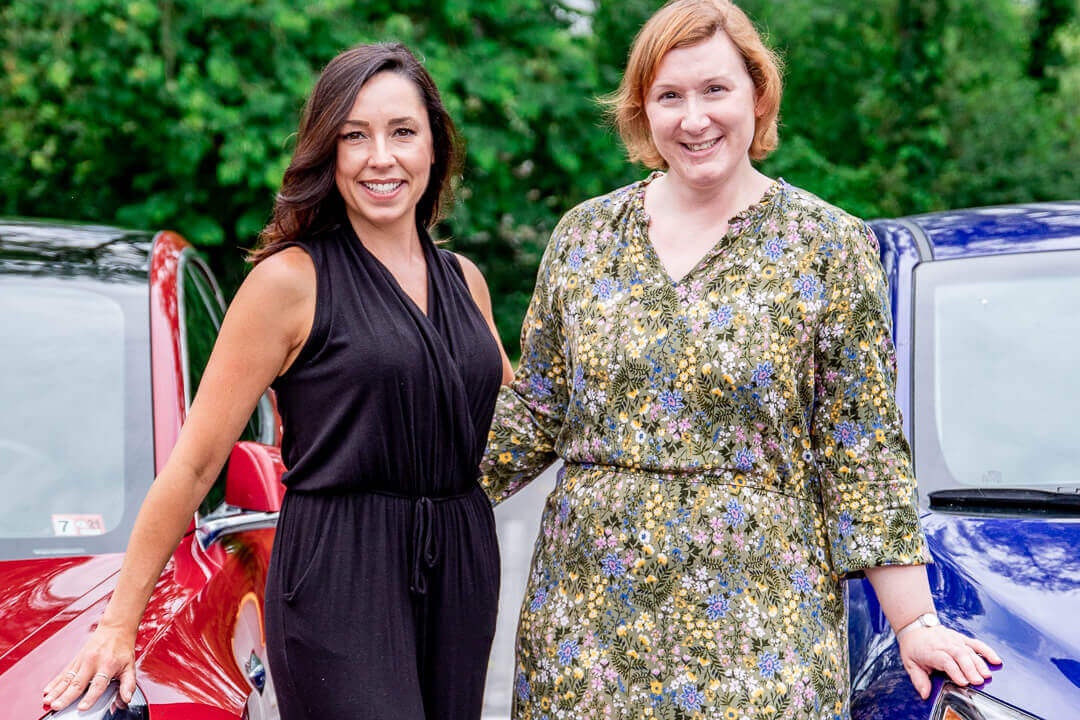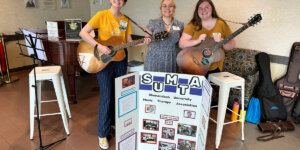They call themselves the Electric Car Brigade: a small group of Shenandoah faculty and staff who bond over their love for charged cars, a cleaner planet and avoiding time at the pump.
We love each other. We take care of each other. Electric cars are becoming more common, and we’re moving in the direction where we’re using renewable energy to fuel our cars instead of fossil fuels.”
Amanda Grantham | Assistant director of career and professional development
Shenandoah prides itself on forward environmental thinking. In 2019, through a partnership with Secure Futures, a total of 1,337 solar panels were installed across three campus buildings, making Shenandoah’s system the largest rooftop solar power system of any Virginia college or university. Shenandoah has also been considered an environmentally friendly campus for years and is among 416 green colleges featured in “The Princeton Review Guide to Green Colleges: 2021 Edition.”
And now the university is getting charged up on electric car culture.
It’s growing. The more that we can communicate that we are here, the more the population will know.”
Shylo Martinez, M.F.A. | Assistant Professor of Dance who drives a Tesla Model 3
SU’s electric car culture is a friendly one. We’re good at sharing chargers, and I think we’re also good at showing gasoline car drivers what it’s like to have an electric car today.”
Bryan Davis, Ph.D. | Assistant Professor of Chemistry who owns a Chevy BoltEV.
There are five members of the Electric Car Brigade: Grantham, Martinez, Davis, Registrar Emily Hollins and Andrea Zanelotti, an Office of Auxiliary services coordinator. They share the six electric car spots on campus: four at the Wilkins Athletics & Events Center garage and two at the Brandt Student Center garage.
Members say they drive an electric car because it cuts down on gas expenditures, doesn’t involve oil changes, and is better for the environment. It’s also fun to spot other electric cars on the road and to explain to gasoline car drivers what it’s like to own an electric vehicle.
As part of the group, Davis has shared technical information about charging and how much variation there can be depending on temperature. The group also discusses etiquette tips, such as moving your electric car out of its charging space once it’s charged.
Members of the brigade help each other by plugging each other’s vehicles in to charge once their own car is done powering up. This often saves the other person a walk across campus. They also discuss car stats, like mileage per charge, and personal charging schedules.
It is welcoming. I have met new people who I wouldn’t otherwise have known by talking to them about the charger and their cars. I think we are all good at sharing and we have been communicating well together about the charger availability. We are all grateful to SU that we can charge here for free — or as [Director of Physical Plant] Barry Schnoor says — at ‘no charge.’”
Emily Hollins | Shenandoah’s Registrar who drives a Hyundai Ioniq plug-in hybrid
One issue that the Shenandoah electric car users want to stress is the importance of people with gas vehicles not parking in electric car spots, as this can prevent someone from powering up their vehicle and being able to get home.
“This is equivalent to keeping my car in front of the only gas pump available,” Martinez said.
As for moving forward, Schnoor said there are plans to add more electric car chargers in the near future.
“I think we’ll add one at the Admissions/Wilkins parking lot, and one more in the student center parking garage,” he said, adding that more will be installed over time at other visible spaces on campus.
Explore the Sustainability Initiatives at Shenandoah





